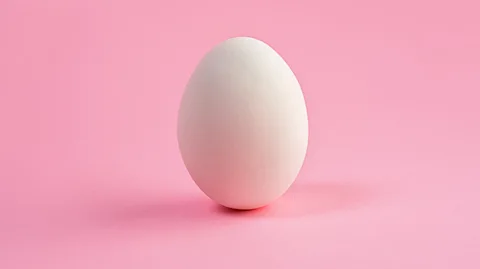The perfect, but slow, way to boil an egg - according to science
 Getty Images
Getty ImagesScientists have cracked the perfect way to boil an egg – astonishingly, it takes half an hour.
It is one of the undisputed facts of life that it is notoriously difficult to cook a perfectly boiled egg. Breakfasts can often be disappointing affairs when, after cracking the shell and dipping your toasted soldier into what you hope will be a culinary delight, you instead find that your yolk is dry and crumbly, or even worse, the egg white is a slimy watery mess.
The problem is that the yolk and albumen (the white part of the egg) cook at two different temperatures. Yolk requires a temperature of just 65C (149F) to cook, while the albumen needs a little more heat at 85C (185F).
Conventional methods for cooking eggs, therefore, represent a compromise between those two seemingly incompatible truths. Hard-boil an egg at 100C (212F), and the white will soon become tender and just right. The yolk, however, will be fully set – which is alright if you like that sort of thing, but disappointing if you're after a soft, runny yolk. Another method of cooking an egg, known as sous vide, involves placing the egg in a water bath at temperatures between 60 and 70C (140-158F) for one hour. This leaves the yolk deliciously runny, but the white can be left slimy and clear.
However, worry not, as researchers have now discovered the perfect method for boiling an egg. What's more, they have shown that the result is not only tastier, but better for you too.
 Getty Images
Getty ImagesHow easy is the method to follow?
I like a runny yolk, so to find out if the periodic method really works, I convinced my husband – who used to work as a professional chef – to try it. Although, at first, he was aghast at the idea of boiling an egg for 32 minutes, he diligently performed the instructions as close to the letter as possible. The result, considering the effort he put in, was slightly disappointing. Although the white was pleasingly firm and less watery than that of a soft-boiled egg, the yolk was not runny enough for my taste. It didn’t ooze in the way it ought to. But perhaps one or two minutes less would have made all the difference.
In their new paper, researchers led by Pellegrino Musto, a scientist working at Italy's National Research Council in Pozzuoli, first simulated the egg-cooking process using computational fluid dynamics (CFD). CFD is the science of using computers to predict how liquids and gases flow based on the physical laws governing them, such as conservation of mass, momentum and energy.
The simulations suggested a new method – one likely to be entirely unfamiliar to most chefs and amateur cooks – that might give superior results. The approach, which the authors call periodic cooking, involves alternating between cooking the egg in a pan of boiling water kept at 100C (212F), and placing it into a luke-warm bowl kept at 30C (86F). To get the best results, the egg must be transferred between the two temperatures every two minutes for a total duration of 32 minutes, so it is probably not best suited to home cooks who like to dip in and out of the kitchen leaving their egg unsupervised.
If you are willing to put in the effort, however, your rewards will be plentiful. When scientists tried the new method in real life, the resulting egg was exceptional. The researchers confirmed this superiority by analysing the texture, sensory qualities and chemical structure of their perfectly boiled egg using Nuclear Magnetic Resonance and High-Resolution Mass Spectrometry.
 Getty Images
Getty ImagesThe results showed that periodically cooked eggs had a soft yolk similar to that of a sous vide egg – so far so good. However, unlike eggs cooked sous vide, the white albumen was not runny and uncooked, but instead had a consistency closer to that of a traditionally soft-boiled egg. According to the paper's authors, this is probably because, while temperatures in the periodically cooked egg white ranged between 35C (95F) and 100C (212F) during cooking, the yolk remained at a consistent temperature of 67C (153F) throughout.
Perhaps most interestingly, chemical analysis revealed that the yolk of periodically cooked eggs contained more polyphenols – a group of micronutrients mostly found in plants, and touted for their health benefits – than eggs cooked by other methods. This class of compounds is renowned for its antioxidant and anti-inflammatory properties. Plants make them as a defence against stressful environmental conditions such as UV radiation, droughts or predation by insects. However, research increasingly shows they can benefit humans too. For example epidemiological studies suggest that high dietary intake of polyphenols is associated with decreased risk of cardiovascular disease, specific forms of cancer and neurodegenerative diseases.
Even more reason to try periodically cooked eggs next time you fancy dippy eggs and soldiers for breakfast.
--
For trusted insights into better health and wellbeing rooted in science, sign up to the Health Fix newsletter, while The Essential List delivers a handpicked selection of features and insights.
